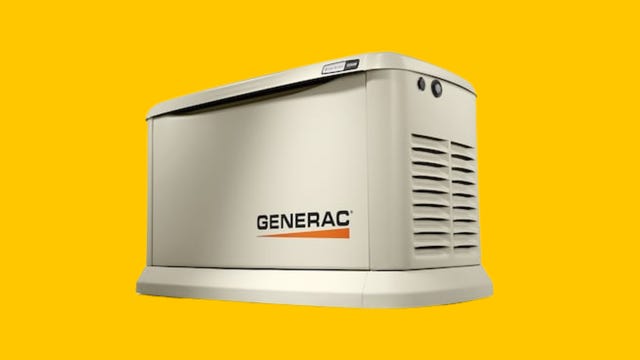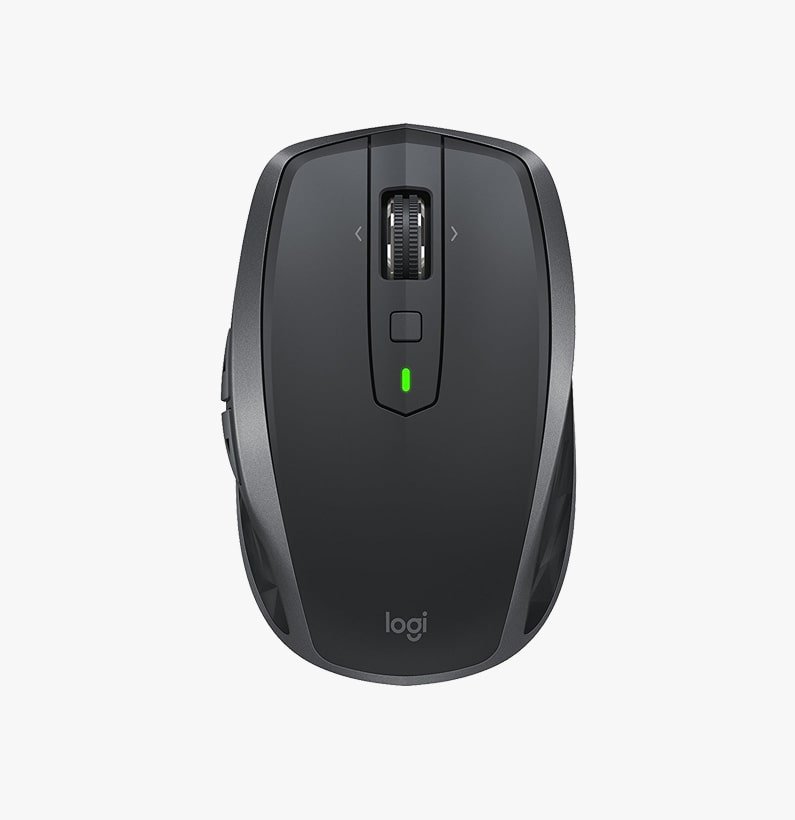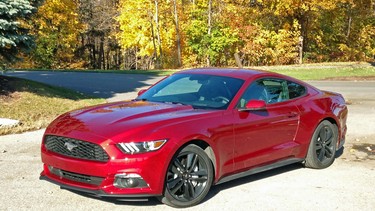Power outages and blackouts are inconvenient and dangerous. With storms and power grid failures becoming more common, sometimes you may lose power for long periods of time, which can cut you off from the rest of the world. Home generators can help.
Due to an increase in strong storms and natural disasters along with an aging power grid, the threat of blackouts seems more urgent than ever. It’s good to have some power backup in these extreme scenarios, and it can be critical especially for those in remote locations or with special medical needs.
There’s a dizzying selection of home generators that can keep the electricity flowing with a price range that’s just as broad.

Offering the full suite of Generac’s gas powered generators and rechargeable backup batteries, Canter Power Systems has been providing back-up power options for 70 years and is now the largest full-service generator installer in the nation.
You don’t want to overspend on more power than you could ever possibly want, and you also want to avoid a generator that can’t deliver the electricity you need when it matters most. To help you navigate this hidden universe of personal power generation, we’ve put together this extensive buying guide to help assess your own needs and better evaluate your options.
If you’re looking for other options, consider the advancements in home backup batteries. When paired with solar panels, they can keep the lights on for days.
What is a home generator?
A generator is an appliance that can supply electricity for your home, your business or when you’re on the go. Think of them as your own little power plant. Not all generators function completely independent of public infrastructure, though. Some will require a functioning natural gas hookup for fuel.
You might think of a generator as a loud, stinky engine you can plug into. While these machines certainly still exist, there’s now much more variety available. There are even products marketed as generators that have no engine at all.
Safety concerns
Before choosing a generator, it’s important to understand the safety considerations involved. Generator exhaust contains carbon monoxide that, when improperly ventilated, can build up and poison people.
“Never run the generator in enclosed spaces, as they produce exhaust no different than your car or power tools and, that’s not good for anyone due to CO poisoning,” said Christopher Haas, a licensed master electrician and owner of Haas & Sons Electric. “Even so, we recommend a portable CO detector to be certain exhaust doesn’t find its way to your living quarters. These can be purchased easily online for infrequent use, but I recommend installing CO detectors in your home anyways, so place a wall unit near your garage year-round.”
About 70 people die each year from carbon monoxide poisoning from portable generators alone, according to the US Consumer Product Safety Commission.
Operate your generator away from your living space (at least 20 feet from any enclosed space people might enter). You can also find generators certified to mitigate the risk with features like carbon monoxide sensors and automatic shutoffs.
Types of generators
The basic types of generators include larger, permanent generators meant to power an entire home in the case of an emergency and smaller portable generators that can be used for smaller homes, RVs or work sites. These typically run off propane or gasoline. There’s also a category of products marketed as solar or “fuel-less” generators that are essentially compact battery banks that can be connected to solar panels.
“Obviously you don’t want to bring a petrol generator into your house,” explained Mike Murphy, owner of PrepSOS, which sells generators and other emergency preparedness products. “But the smaller solar generators like the Bluetti or Ecoflow you can bring in your house just to run your fridge or power your laptop or something like that.”
Here’s a close look at some of the main types of home generators.
Portable generator
A portable generator, as the name suggests, is one that’s easily portable. These generators often have wheels, making them easy to move around to deliver electricity anywhere. Even smaller models may be handheld rather than on wheels, making them even more mobile. Portable generators usually run on gasoline and tend to be more affordable than standby generators.
Inverter generator
An inverter generator is similar to a portable generator in that it’s smaller and easier to transport. But inverter generators tend to be even lighter than a standard portable generator. They are also quieter, which can make them suitable for a wider range of activities, including camping and other activities.
They also have an on-board inverter that delivers household appliance-ready 120-volt AC power. Though most louder, open-frame portable generators also can deliver AC power, so it’s a bit of a misnomer. When you buy an inverter generator, you’re really paying a little more for a device that’s quieter and compact.
Standby generator
A standby generator is a more permanent solution than a portable generator. It’s larger, considerably more expensive and permanently installed at your home or business. When your power goes out, the standby generator automatically turns on. Rather than gasoline, standby generators are often fueled by propane, and can also be powered by natural gas.
According to Haas, the licensed electrician we spoke with, standby generators eliminate many of the safety concerns associated with portable generators. And while they’re most expensive, it could be an option if safety is your top priority.
Solar generator
Solar generators stretch the definition a bit. They aren’t engines that convert some fuel to electricity; they’re portable batteries that can charge via portable solar panels (or just by plugging them into the wall). Since you can charge them with just the sun, you won’t have to worry about running out of fuel.
Whole home battery backups
Home batteries provide an alternative to generators. These batteries are electric, so there’s no gasoline or carbon monoxide involved. They’re installed directly on your home (inside or outside) and store energy that your home can use during an outage. When the grid outage is over, the battery pulls power from the grid to charge back up again. And paired with solar panels and the right inverter, they can recharge for use through extended outages.
How much do generators cost?
Whole home generators capable of producing up to 20 kilowatts range from $10,000 to $15,000, including installation and hooking them up to gas lines, according to Murphy. He said portable generators can range from $1,500 to $3,000 for one big enough to power a whole home.
For solar plus storage systems, you can pay between $15,000 to $60,000 for a complete system that includes enough panels to run your home and charge the battery in an extended blackout situation. Smaller, portable solar generators that can power just a couple of devices can range from a few hundred dollars to a few thousand. It’s possible to find smaller generators in all categories that are less expensive but produce less energy.
What to consider when comparing home generators
There’s a lot to consider when buying a generator. Below, we’ll talk about some of the most important considerations that can help you make your decision.
Power requirements
One of the most important considerations when choosing a generator is the amount of power you need. You can likely answer this question by considering what you’ll be using the generator for. Portable generators produce less power and may be suitable for powering a few small things. On the other hand, a standby generator could power your entire home.
“When weighing the options for a generator, you need to consider and tally what appliances you consider mandatory for the continuation of services.” Haas said. “A refrigerator needs about 600 watts, your sump pump (helpful for flood-prone regions) needs about 1,300 to 2,150 watts to start and about 800 to 1,000 watts to run. For those in winter regions, a portable heater may need up to 1,500 watts. Small devices like our phones charging only require 10 watts, so they’re not a concern compared to the big appliances that you’ll have to factor in and gauge what’s right for your needs.”
| Appliance | Wattage requirement |
|---|---|
| Air conditioner | 500-2,000 |
| Dryer | 1,800-6,000 |
| Microwave | 600-1,500 |
| Refrigerator | 300-800 |
| Space heater | 700-1500 |
| TV | 50-300 |
Some of the biggest power hogs in any household are likely to be anything that modifies temperature, whether it’s an air conditioner, electric stove or electric heater. Be sure to look for a generator that can handle these big loads, or think about nonelectric alternatives like a propane stove or wood fireplace.
Common uses
It’s not just about how much power you need your generator to produce, but also what you’ll be using it for. Choosing a generator to power your home in an outage is very different from choosing one to take on a camping trip. Remember, standby generators are installed permanently at your home and provide backup electricity during an outage. A portable generator, on the other hand, can be taken with you on the go. For even more portability, you might choose an inverter generator that is lighter and makes less noise or a solar generator.
Fuel source
There are generally three different ways you can fuel your generator. The choices available to you will depend on the type of generator you choose and the specific model. First, gasoline is most often used to fuel portable generators. Propane can be used to fuel both standby generators and portable generators. Finally, natural gas can be used to fuel standby generators, but isn’t available for portable generators.
New backup and portable power sources may not require fuel at all. Home backup batteries and solar generators simply store electricity for you to use later.
Budget
The generator you choose will also ultimately depend on your budget. Remember that standby generators are more expensive, while portable generators are generally more affordable.
Other features
Before choosing the right model for you, consider which features are most important to you and which you can live without. Here are a few features to look out for in generators:
- Automatic CO shutoff: For fossil fuel-powered generators, an automatic carbon monoxide shutoff can kill the engine if dangerous levels of the poisonous gas are measured. It shouldn’t take the place of safe operating procedures, however.
- Electric start: Rather than requiring you to pull-start the engine, an electric start simply requires that you push a button to start your generator. Battery-based generators will start with a button, if they require anything at all.
- Automatic start: If your generator is intended to power your home in a power outage, you may want an automatic start. It will automatically turn on your generator if your home’s power goes off.
- Fuel gauge: When your generator has a fuel gauge, you can easily glance at it to see how much gasoline or propane is left so you know when it’s time to refuel.
- Multiple outlets: Having multiple outlets on your portable generator allows you to run more than one device at a time.
- Low-oil shutoff: This feature protects your generator from damage by automatically turning it off if the oil dips below a certain level.
Here Are 23 Ways to Save On Your Electric Bills Right Now
See all photos
Do you need a transfer switch?
A transfer switch is simply a sensor and switch that physically switches your home’s source of power in the case of a blackout. Some generators and inverters have transfer switches built in, or they can be a stand-alone component incorporated into your home’s breaker box, meter or grid tie-in. This can be a key part of any back-up system, especially if you need to keep your power on even when you aren’t around.
Maintaining your generator
No matter what generator you choose, it’s important that you regularly maintain it to ensure that it runs well and safely when you need it.
“You have to service these generators annually so if you need them in an emergency you can rely on them,” Haas said.
First, it’s important that you check and change the oil in your generator. It’s recommended that you check the oil before using it and change the oil every 100 hours or so (though it should be earlier for a new generator). While you’re checking the oil, also take the time to check the filters and the spark plug to ensure they’re in good shape.
Next, avoid letting your generator sit for too long without being used. Running your generator helps to burn off moisture and recharge the battery. And when you aren’t planning to use it for more than a few weeks, it should be run dry so it’s not sitting with fuel in the lines. Finally, be sure to store your generator properly in a way that it’s protected.
“You shouldn’t store your generator outdoors, but if you had to, please don’t operate it with any sort of green debris on it,” Haas said. “Dead leaves, pine needles, and more can find their way into the unit and when it fires up they can lead to fires.”
The bottom line
There’s a lot to consider when choosing the right generator. But if you take into consideration all of the information above, you’ll have an easier time finding the right generator model for you. If a generator is too noisy, you might opt for a portable solar power station.
Generator FAQs
How big of a generator do I need to run my house?
Determine the maximum amount of combined wattage your appliances are ever likely to demand at the same time, including surge wattages, and size your generator accordingly.
What is the average cost to have a whole house generator installed?
It depends on the needs of your house. The installed cost of a 20-kilowatt generator could fall between $10,000 and $15,000.







/cdn.vox-cdn.com/uploads/chorus_asset/file/25523895/247164_Back_To_School_GG_PGuest_LEDE_2040x1360.jpg)
















